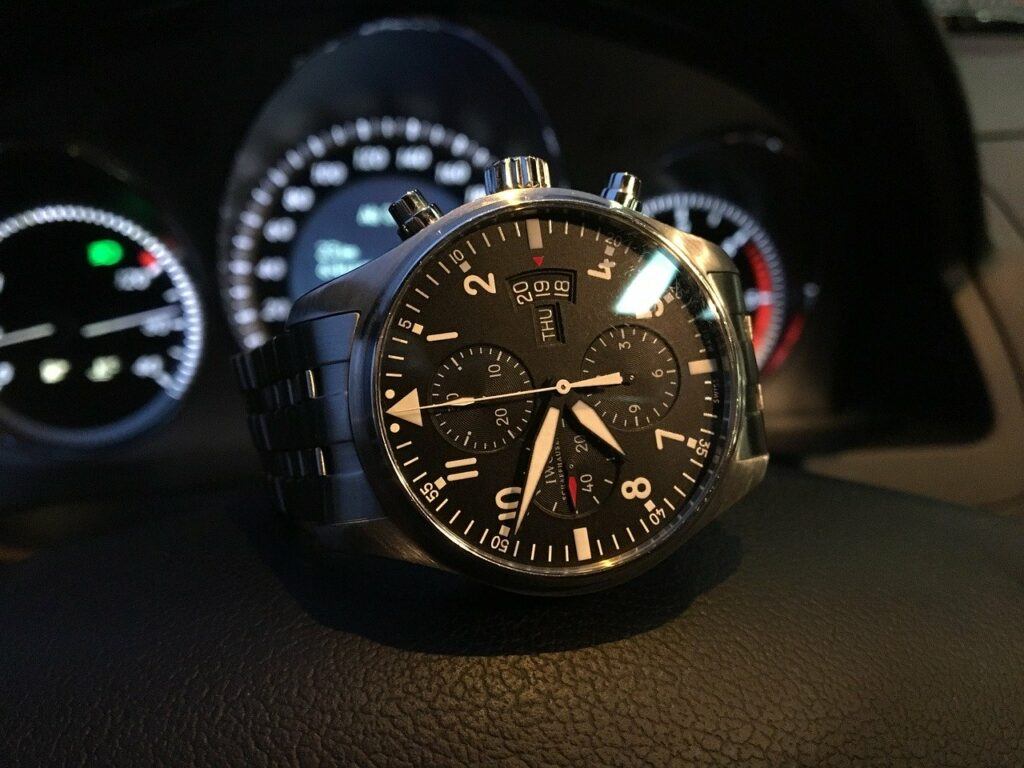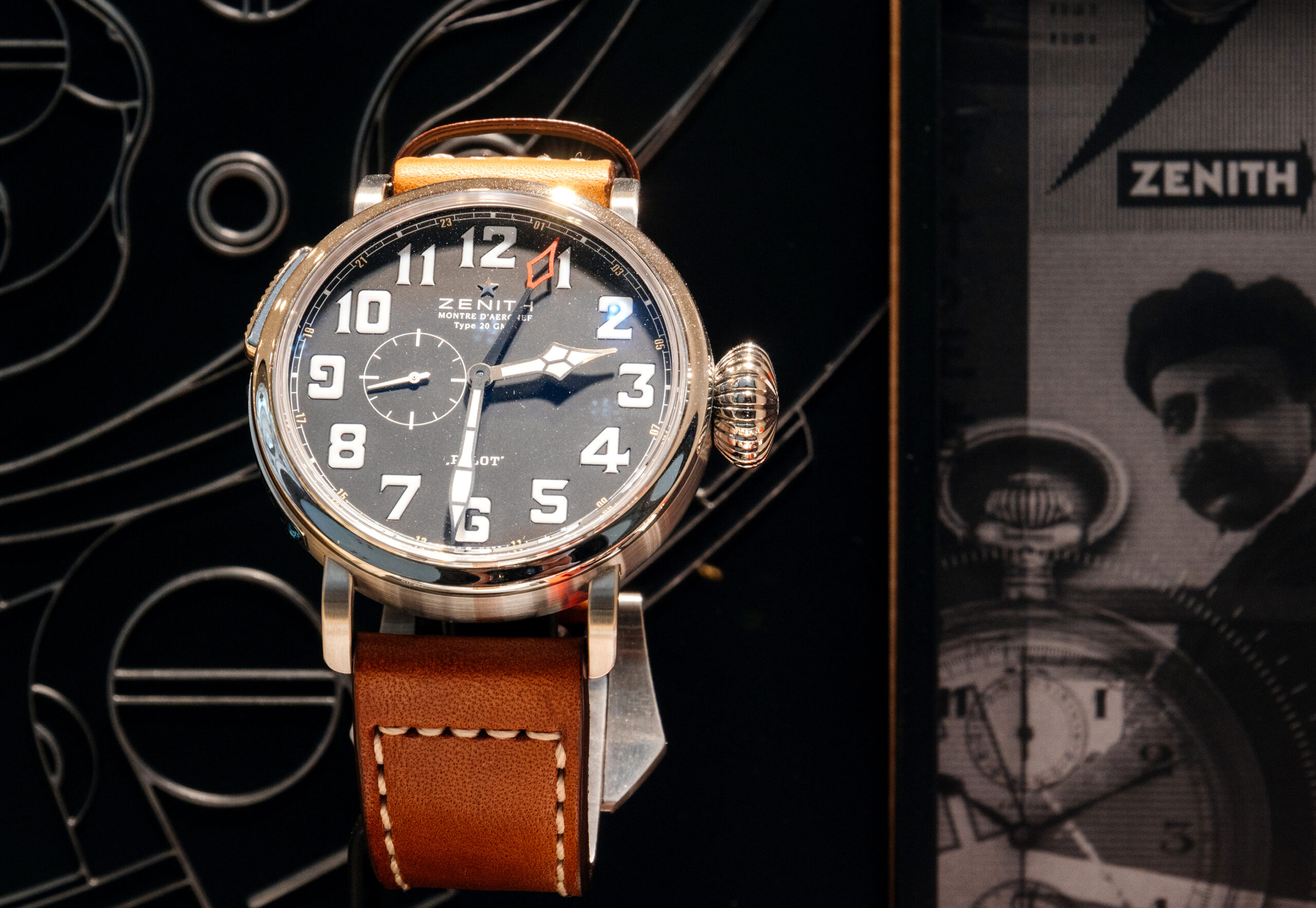Although airplane cockpits contain some of the most sophisticated technology in the world these days, many pilots still opt to wear what was once a crucial tool for aviation- the pilot’s watch.
Back in the day, pilot’s used these essential timekeepers for all kinds of things. From syncing bombings during war to recording air speeds and flight times, these watches played an integral role for the individuals operating these planes.
Over the years, technology has taken over and made these watches less necessary.
Surprisingly though, the classic pilot’s watch remains one of the most popular men’s watch styles for aviators and non-aviators alike.
Just goes to show you a true classic never goes out of style.
But what exactly makes a watch a pilot’s watch? What discerning characteristics do these watches have that makes them unique?
Well, that’s what we’re here to answer. In this guide, we’ll go over all the key features these watches share. After reading, not only will you know what a pilot watch is, but you’ll probably have a better idea as to whether or not this is the type of watch for you.
A Brief History Of The Pilot’s Watch
As you’ve probably guessed, a pilot’s watch is a watch specifically designed for a pilot to use during flight. And just like aviation itself, these watches have a pretty interesting history.
Shortly after the Wright brothers did their thing just outside of Kitty Hawk, NC, a man by the name of Alberto Santos-Dumont flew the first powered flight in Europe.
This feat is historical in its own right, but in preparation for this feat, Mr. Dumont requested that his friend, Louis Cartier, design a watch that he could use while flying the plane.
The watch had to be large and easy to read so Mr. Dumont could read it without taking his hands off the controls.
After a couple of years, Cartier successfully designed a watch that could do just this and the first pilot’s watch (the aplty named Cartier Santos) was born.
This early pilot’s watch was simple, but it paved the way for modern watches. For one, the Cartier Santos was attached to a leather strap- something we take for granted today, but in the early 1900’s we were still in the age of the pocket watch.
A few years later, a French pilot by the name of Louis Blériot became the first person to fly over the English Channel, while wearing a Zenith timepiece.
The event, and Blériot’s praise, put Zenith on the map as a reputable provider of pilot’s watches.
As the World Wars came around, pilot’s watches became even more crucial as much of the fighting occurred in the air. During these wars, pilot’s watches became more rugged (starting to resemble the military field watches that arose during this time).
No aviation history (even one as brief as this) would be complete without a mention of Charles Lindbergh and his historical solo flight over the Atlantic Ocean.
Lindbergh partnered with Longines (the official watch of the Olympics) to design a pilot’s watch that would help him determine his geographic location during his journey.
The years between and after the World Wars saw a big rise in the need for pilot watches. As the commercial sector grew, there where more pilots in the air in need of quality timepieces.
Many brands we recognize today jumped at the opportunity. Names like IWC, Breitling, and Rolex started producing iconic pilot watches- many of which are still popular.
These watches were created out of necessity, but have survived the test of time because of how functional and cosmetically pleasing they are.
Pilot watches remain a popular watch style today.
What Is A Pilot’s Watch Today?
Now that we know how these iconic watches came to be, let’s talk about what features make a watch a “pilot’s watch”. Just like diver’s watches are designed for use underwater, pilot’s watches are designed specifically for use in a cockpit.
Modern pilot’s watches can vary in function. Some will come with more complex features while others are going for a more simplistic, vintage vibe.
Here are some of the common features most will share:

Large, Simple Dial
Pilot’s watches should come with large, easy to read dials. These tend to be some of the largest watches out there, with some (like IWC’s Big Pilot watch) coming with 46 mm faces.
Vintage pilot watches will only show the time and will use large, bold numerals for easy time keeping. More modern watches will often come with calendars, chronographs, or even time zones.
Pilot’s watches usually have an orientation triangle at the 12 o’clock spot for rapid reading.
Over-sized Crown
Another hallmark of both vintage and modern pilot’s watches is the over-sized crown – a feature was most definitely born out of necessity.
The large onion or diamond shaped crown made it easier for pilots to wind their watches while wearing thick aviation gloves. Early cockpits were not heated and it could get very cold up there.
Instead of having to take their gloves off and risk freezing their fingers, they could easily grab and wind the larger crowns without taking their gloves off.
The huge crown is a tell-tale sign of any pilot’s watch. It’s also a great topic for discussion if you need an ice-breaker.
Long, Leather Band
Pilot’s watches have traditionally come with long, leather bands attached to them. Much like the over-sized crowns, these long bands where a feature of necessity.
They were longer than normal so they could wrap around the outside of a pilot’s jacket- this way the pilot wouldn’t have to worry about sliding a sleeve up to see their watch, it was always readily visible.
These days there are plenty of modern pilot’s watches that come with metal bracelets. But if you want to go for that vintage look, leather is the way to go.
Functioning Bezel
The earliest pilot’s watches would’ve been lacking a functioning bezel, but many today come with bezels that can be used to make several different calculations.
Bezels can be used to calculate flight times, fuel burning rates, as well as average speeds and other aviation info.
The markings on a bezel can range from a simple indicator used for timing (with the minute hand) to a fully-functional slide rule that professionals can use to calculate all kinds of stuff.
Anti-Magnetic Case
Pilot’s watches should come with cases that are magnet proof. The cockpit of an airplane is a very magnetic place and if the pilot’s watch isn’t magnet proof, then it’s going to be useless during flight.
Older watches accomplished this through the use of a Faraday’s cage built inside the case. The movement of the watch would be enclosed in a conductive box (like soft iron) to protect it from the magnetic fields.
The early designs were effective, but having to place the watch movement in this case made for heavier, bulkier watch cases.
Today, watch builders can solve this problem by designing the movement out of anti-magnetic materials, thus eliminating the need for the internal Faraday’s cage.
Final Thoughts
Pilot’s watches make a great choice when it comes to choosing a watch style. The iconic design has survived over the decades even though most of the technical functions they serve have become obsolete (although the trained professional can still make advanced calculations using the bezel).
Pilot’s watches today come in many designs and are available at every price point.
Luxury pilot watches are usually mechanical and automatic, while more affordable options may be quartz. Dial size, color, and band materials will vary from brand to brand.
Regardless of whether you’re an aviation enthusiast or not, I think we can all agree that the pilot’s watch is a classic style that would make a great addition to any man’s watch collection.

